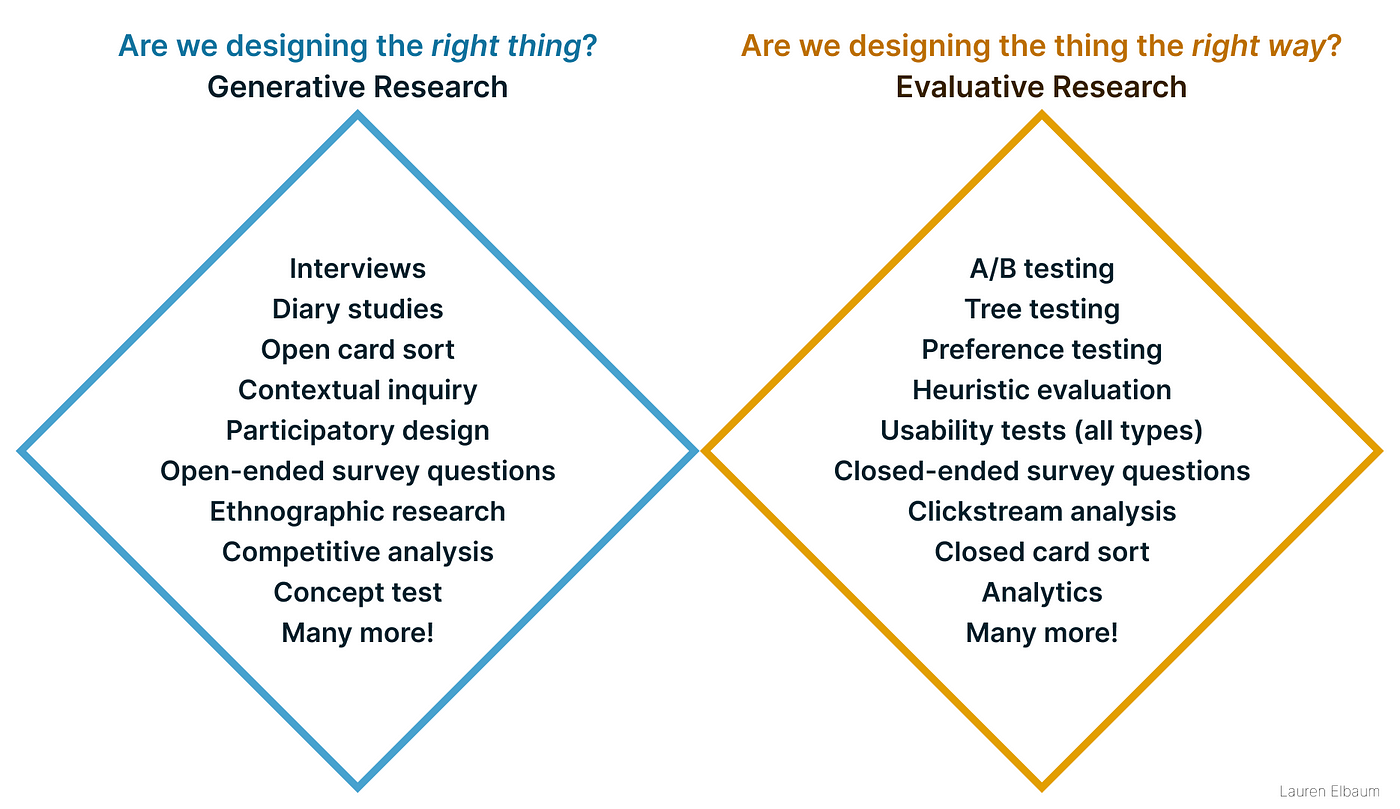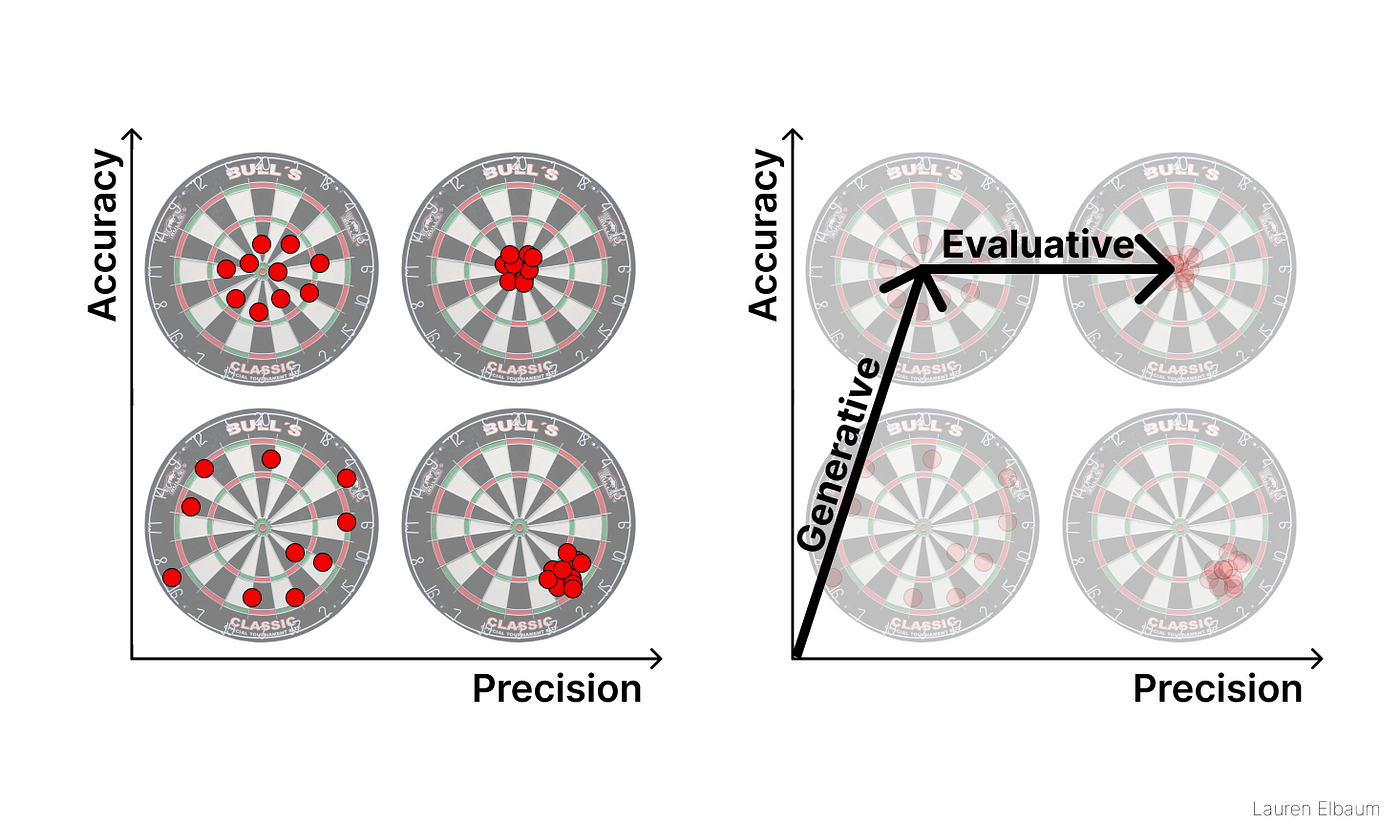Before starting a UX research project it’s important to recognize where we are in the UX design process. Are we trying to design the right thing or are we designing the thing in the right way? Here’s an image from wikipedia that shows the design process:

UX research methods generally fall into one part or the other of the UX design process.
Generative research
These methods generate ideas and tell us if we’re designing the right thing. They allow us to explore, discover, and play with ideas. Many generative research methods have open-ended questions which let users tell us a story about their life, goals, mental models, and experiences. These methods allow us to be accurate with our solutions.
Examples of generative research questions:
- Where should I even start?
- What are our users’ goals, and why?
- What happens in a user’s life around this product, and how does it fit?
- What is this culture like, and how might a product relate to it?
- How are our competitors solving this problem?
Evaluative research
These methods evaluate ideas and tell us if we’re designing things right. We use evaluative research methods when we have solution ideas and want to evaluate how good (or bad) they are. They often have closed-ended questions that allow us to understand precisely what did or didn’t work, and refine our ideas.
Examples of evaluative research questions:
- What are the pain points in this flow?
- What are the fast, easy wins if we redesign our current interface?
- Where are people clicking? How much? And are they getting to the right place?
- Which copy leads to more conversions?
- We’ve got two designs, which is better at helping users accomplish their goals?
Before starting a research project it’s important to think about which part of the design double diamond we’re in: are we designing the right thing? Or, are we designing the thing the right way? That will help us choose between generative and evaluative research methods. The image below has research methods commonly used for generative research and evaluative research.

Sometimes research methods can generate and evaluate ideas. For example, competitive analyses are primarily used to inspire ideas based on competitors’ designs, but they can also evaluate a current design at our own company.
We can also mix generative and evaluative methods. For example, we can have a two-phase project with interviews first and a survey next. A one-phase project might start with a contextual inquiry and end with a usability test in the same sitting.
Diverse data points lower the risk in product decision-making.
Conducting generative research makes sure we’re solving the right problem. As a researcher, I’ve seen a lot of assumptions about customers’ problems; many of them are way off-base. Let’s double-check that we understand our customers’ needs and goals. There are so many problems in the world, what is the most important problem we’re trying to solve for our customers right now? Generative research is something that brings accuracy to our solutions.

Once we’ve thought through different solutions, it’s time to evaluate them. I’ve seen designs that resonate with internal stakeholders, but when we put them in front of customers, they have no idea what’s going on. We need to find out which solutions come closest to meeting our users’ needs and get feedback to make them clearer and more precise.
Both phases of research are important. If we skip the evaluative research phase, our solutions will lack refinement. If we skip the generative research phase we’ll end up with a great design for a problem that doesn’t exist.
Special thanks to Tyler, Melissa, and Peter on my team for the feedback that made this article better
